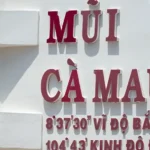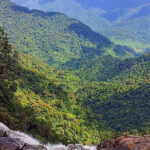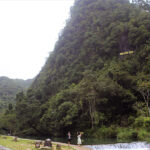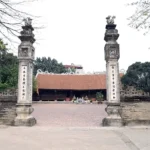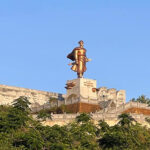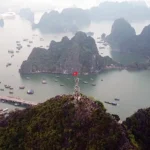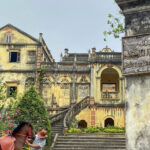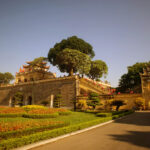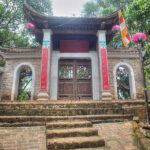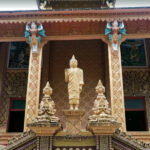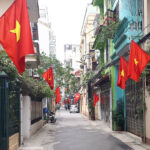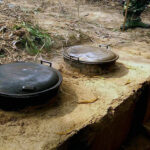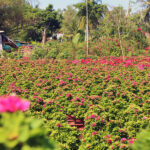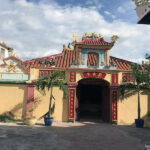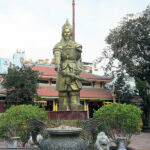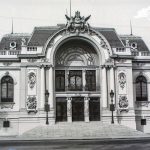For more than a century, standing tall across the Red River, Long Bien Bridge in Hanoi is not only a great historical witness of Hanoi people, but also a very familiar destination in the bustling center. Now let’s learn about this famous bridge through the following article with Vietdreamtravel!
General information about Long Bien Bridge
The Red River flows through Hanoi – in some places it is more than 1.5km wide, in some places it is up to 20m deep, the dry season and rainy season have a water volume difference of up to 10m, strong currents, fast water, sand bars everywhere.
Since 1893, merchant ships and steam ferries were used but were ineffective. The construction of solid embankments took years, and people had to walk in mud. It can be said that crossing the Red River and landing goods were not simple at that time. The necessary need to connect the two banks of the Red River was to build a bridge, a very large bridge at that time.
In 1897, the bidding to build that bridge was held. Daydé & Pillé company won against other major competitors in France in terms of architecture. According to the design, the bridge is 2,500m long in total, has 19 spans, 2 boundary abutments, and 18 bridge piers 30m deep to the lowest water level.
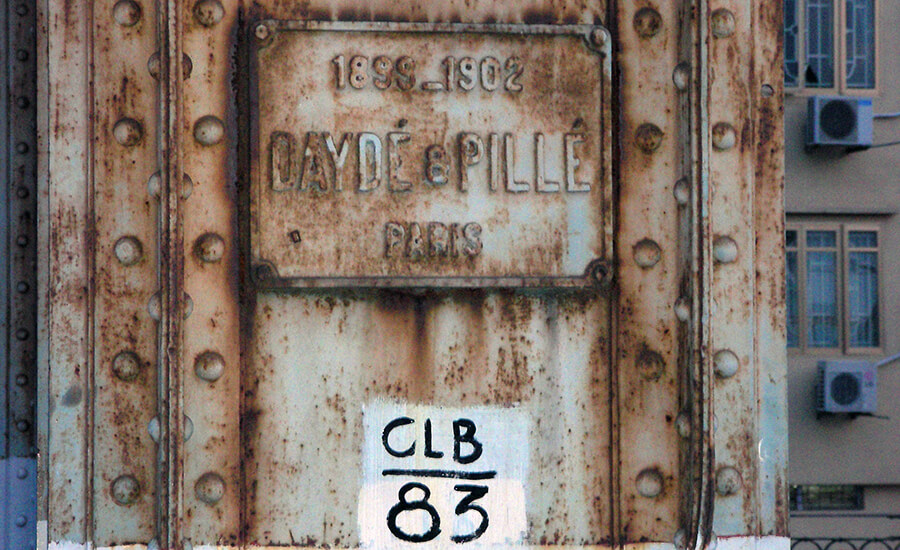
In September 1898, at the end of the rainy season, Governor General Paul Doumer laid the first stone to start construction. 15,000 tons of materials and 7,000 tons of iron and steel were brought from France. Under the command of about 40 French engineers and project commanders, 3,000 Vietnamese workers dedicated themselves to building this project.

Expected to last 5 years, the project was completed in less than 4 years. The Paul Doumer bridge consists of a central track for trains, and two wooden side tracks for pedestrians and bicycles. At that time, Paul Doumer Bridge was considered one of the four largest bridges in the world. Surely this is the largest bridge that France has never built on his territory and colonies.

On February 28, 1902, the bridge was opened to the public. Thanks to that, the road to Hai Phong is also smooth, helping to shape the North – South railway route. In October of that year, Paul Doumer ended his term, returned to France and the position of President of the French Republic awaited him nearly 30 years later.
Doumer Bridge was expanded, reinforced and inaugurated for the second time on April 23, 1924 under the direction of French Governor General Martial Merlin. The two lanes on both sides, which were originally 1.3m wide, were converted into a 2.2m wide road surface plus a 1m wide sidewalk, both paved with 4cm thick wood. 500,000 rivets and 2,400 tons of metal were added to reinforce the bridge’s original structure. Daydé Company once again took charge of the project, even passing trains did not have to stop while the construction was still going on.
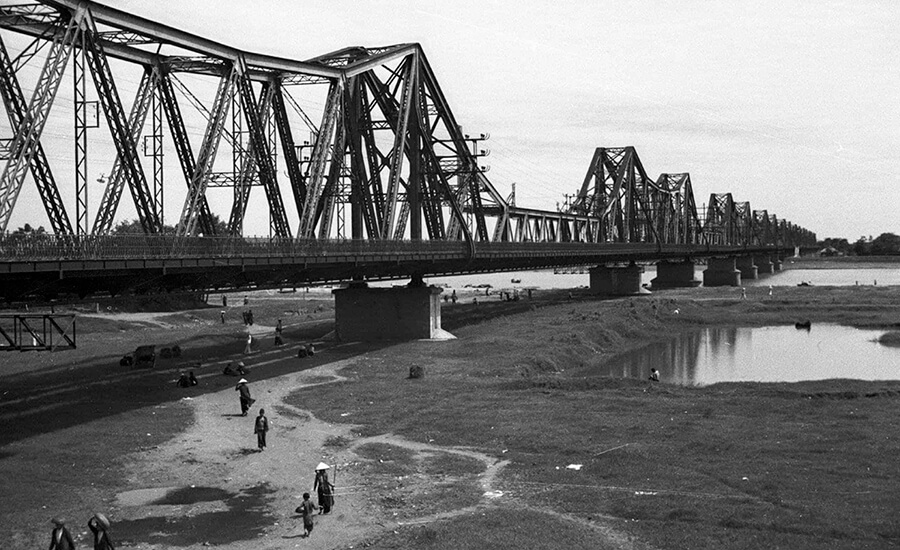
Then continuous firefights took place. During World War II, the Japanese army occupied Indochina from September 1940. On March 9, 1945, Japan overthrew France and put an end to the French Empire in Indochina. On July 20 of the same year, the Japanese appointed the first Vietnamese mayor of Hanoi, doctor Tran Van Lai. Along with some changes for Hanoi, the mayor changed the name of Paul Doumer Bridge to Long Bien – a name of the district located on the left bank of the Red River.

Many historical events have taken place on this bridge. In this modern process, Long Bien Bridge is expected to be more than a bridge, not just a mossy heritage. Long Bien Bridge will be one of the legacies that inspire creativity, instill confidence in construction, instill practical strength, and connect many thoughtful and effective partners.

Many historical events took place on this bridge. And the North-South railway, the departure point from Hanoi with the Long Bien bridge, is not just a memory. This is one of the legacies that inspires creativity, inspires constructive trust, empowers practice, and connects many thoughtful and effective partners.
Interesting experiences when visiting Long Bien bridge
With historical value and ancient architecture, tinged with the color of time, Long Bien Bridge is a famous tourist destination in Hanoi that attracts a large number of tourists and locals alike to sightsee and enjoy the cool air. Below are interesting experiences that you can refer to during your visit:
Check in to Long Bien bridge and admire the sunset
Coming to Long Bien Bridge, don’t forget to take nostalgic check-in photos on the historic bridge. In addition, the vast scenery of the river or the Red River rocky beach with vast green areas also helps you have impressive photos.

For dreamers, the sunset on the bridge is a moment you cannot miss. Afternoon falls is the time when the surrounding space becomes more enchanting than ever. It’s also the weak rays of sunlight at the end of the day, it’s also the caressing, cool breeze, but no one can resist the beauty of nature.
Explore famous entertainment and dining locations near the bridge
The area near Long Bien bridge has many beautiful restaurants and cafes with open space. These are ideal stops for you to enjoy Hanoi cuisine, sip your favorite drinks and admire the beauty of the ancient bridge, the rocky beach by the Red River or the bustling Long Bien market next door.
An amazing view of the bridge from above that you should try is from Tran Nhat Duat cafe. The cafe is located on the 4th floor of a luxurious, modern building. The most valuable point of the restaurant is the beautiful view overlooking Long Bien bridge. See the entire bridge from above, more comprehensive. Order a glass of water, chat with friends, and zoom out to see the beauty of Long Bien bridge.

Tran Nhat Duat Coffee is the ideal place for you to admire the ancient Long Bien bridge. The coffee shop is located on the 4th floor of a building, with an open space and an “extremely good” view.
Coming here, you can choose your favorite drink and then sit for hours admiring the scenery and chatting with friends.
Take photos of the Red River right at the foot of the bridge
Another super hot check-in location in Hanoi that you should not miss is the Red River located right under the bridge. Here, you can hunt for extremely poetic virtual photos, with the vast blue sky and lush green grass background.

Besides checking in virtually at the Red River bank, you can also organize camping and BBQ right outdoors. Everyone gathers together, eats, drinks, and breathes fresh air.
Source: collected by An
Follow us for the best deal with Vietnam package tours and visa services!










